Jenny Lind Bed Bench
As an Amazon Associate, I earn from qualifying purchases.
Do you know why it’s a Jenny Lind bed?
From Apartment Therapy-Jenny Lind-Cottage-style spindled furniture bore her name after she reportedly slept in a bed with turned spindle posts. The name stuck and so has this style of furniture.
This is a VERY long and picture heavy post. If you don’t need the tutorial, skip reading the long tutorial, and just look at the pictures.
It’s funny how you remember exactly where you got certain things. In the Spring of 2010 I went to a yard sale and bought several items.
 I picked up these antique armoire doors that I made into a headboard.
I picked up these antique armoire doors that I made into a headboard.
 I also got this foot board. It was a great deal at only $5.00. I put it in the shed, and there it waited patiently. After I designated part of the basement as my workshop in the fall, I gathered several items on a warm day and carried them to the basement. If we had cold weather and/or snow I wanted to make sure there was sufficient inventory in the basement to work on.
I also got this foot board. It was a great deal at only $5.00. I put it in the shed, and there it waited patiently. After I designated part of the basement as my workshop in the fall, I gathered several items on a warm day and carried them to the basement. If we had cold weather and/or snow I wanted to make sure there was sufficient inventory in the basement to work on.
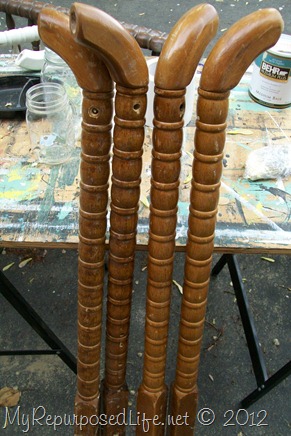 These crib parts have also been waiting around since the Spring of 2010.
These crib parts have also been waiting around since the Spring of 2010.
Because this bench will be made from a foot board and not a headboard, it needs a little re-design. If I left it as it was, it would only sit high enough for a child’s bench.
Move miter saw to the floor
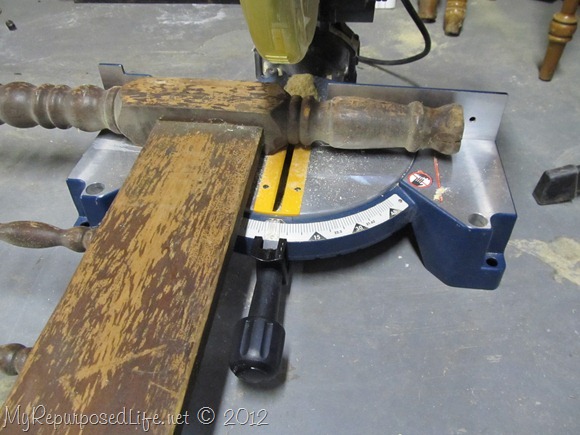 To make it taller, I needed to cut the legs off.
To make it taller, I needed to cut the legs off.
Hint: when cutting something large or cumbersome move your compound miter saw to the floor.
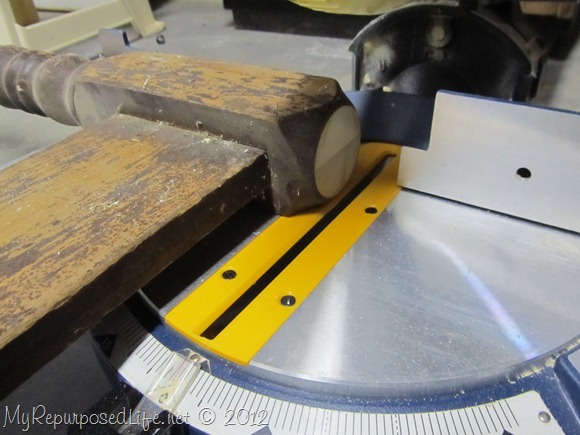 I decide that if I’m going to piece it together, I need to shave a little more off.
I decide that if I’m going to piece it together, I need to shave a little more off.
 I take it all the way down to the “square” post of the bed.
I take it all the way down to the “square” post of the bed.
Using spare bed parts
 A random part of a bed was found in the garage. Its post is the same size as the post on the original bed. Because it is/was a bed post, the ball is rounded.
A random part of a bed was found in the garage. Its post is the same size as the post on the original bed. Because it is/was a bed post, the ball is rounded.
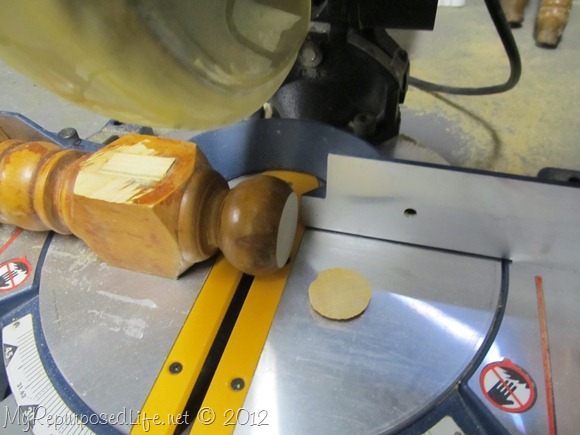 I cut just enough off the bottom so that it will sit flat on the floor.
I cut just enough off the bottom so that it will sit flat on the floor.
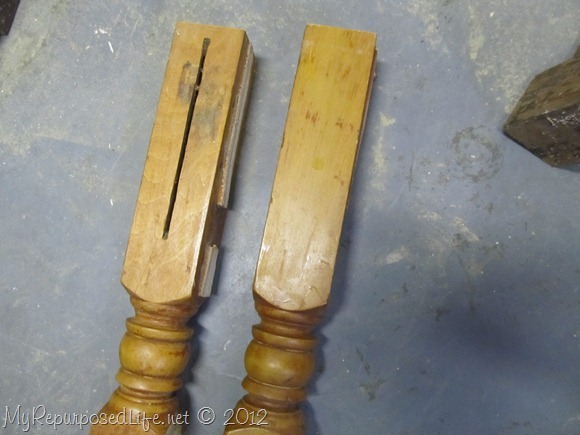 At one time or another I cut the headboard or foot board from these posts with my sawzall.
At one time or another I cut the headboard or foot board from these posts with my sawzall.
 To remove the bits that are extending beyond the post you can use a rasp.
To remove the bits that are extending beyond the post you can use a rasp.
How to get a great flush cut
 However, I pulled out the “big guns”. To get a great flush cut use your Dremel multi-max.
However, I pulled out the “big guns”. To get a great flush cut use your Dremel multi-max.
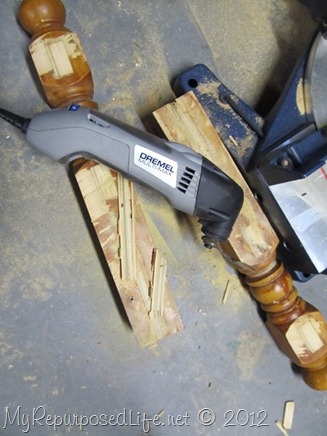 The Dremel Multi-Max shaved those pieces right off!
The Dremel Multi-Max shaved those pieces right off!
Attach bed post to headboard that is too short
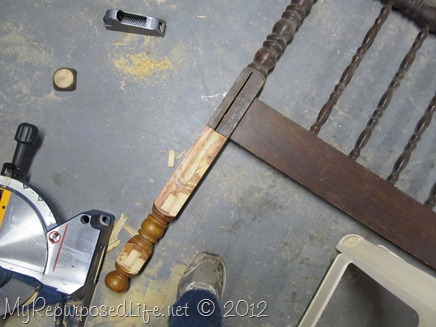 I test the “new” legs to see if they will be the right height.
I test the “new” legs to see if they will be the right height.
Pocket hole construction for Jenny Lind Headboard Bench
 My Kreg Jig was used to make some pocket holes in the “new” legs.
My Kreg Jig was used to make some pocket holes in the “new” legs.
 I set my jig for 1 inch.
I set my jig for 1 inch.
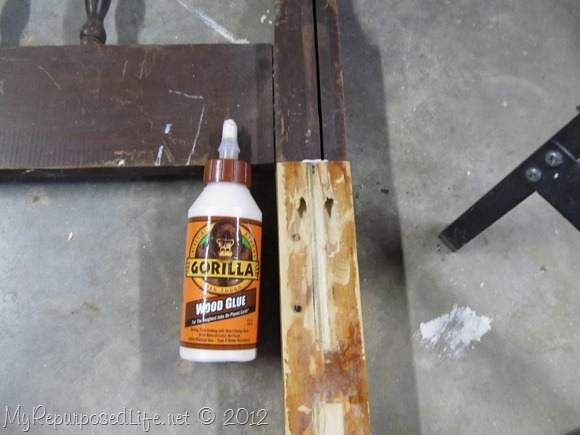 To get a solid hold, I make pocket holes on the back side and front side of the “new” legs. I used Gorilla Wood Glue for extra strong hold.
To get a solid hold, I make pocket holes on the back side and front side of the “new” legs. I used Gorilla Wood Glue for extra strong hold.
Choose front legs for headboard bench
 Now I need some front legs. I hunted for something that had the same diameter post. I’m trying to figure out where I want to make my cuts. I’ve often said that choosing front legs is the first step. However, I needed to get the headboard to the proper height first.
Now I need some front legs. I hunted for something that had the same diameter post. I’m trying to figure out where I want to make my cuts. I’ve often said that choosing front legs is the first step. However, I needed to get the headboard to the proper height first.
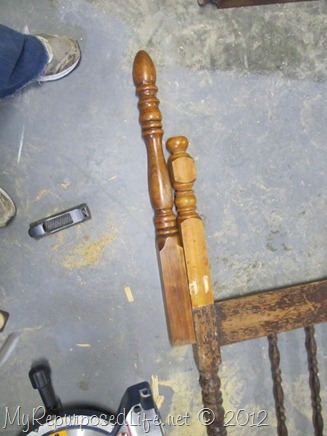 The “squared” post needs to be in the right place for the front “skirt”. I don’t want to attach the skirt to the rounded part of the post. Carefully, I marked and made my cuts (not shown).
The “squared” post needs to be in the right place for the front “skirt”. I don’t want to attach the skirt to the rounded part of the post. Carefully, I marked and made my cuts (not shown).
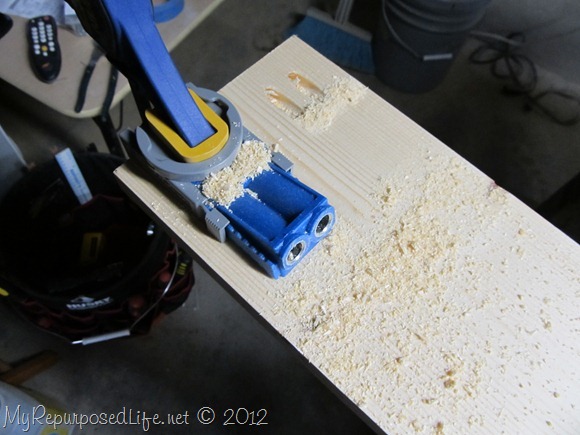 I used a 1×6 for the front and sides which meant I needed to set my jig back to 3/4 inch for the thickness of the 1×6.
I used a 1×6 for the front and sides which meant I needed to set my jig back to 3/4 inch for the thickness of the 1×6.
Build front section for headboard bench
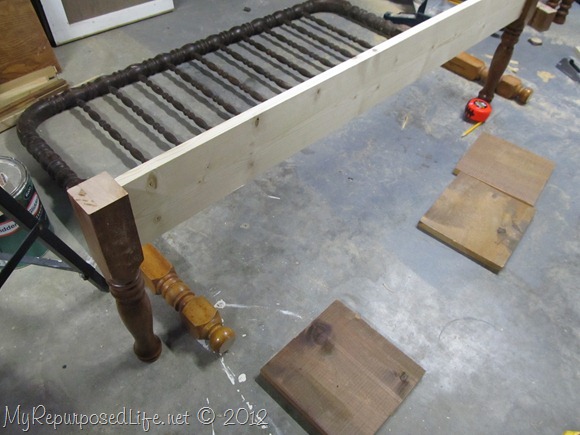 To attach the front to the “middle” of the legs, I laid the 1×6 down on some scrap pieces of lumber. They held the 1×6 off the floor and allowed me to screw into the pocket holes and attach the front skirt into the middle of the post.
To attach the front to the “middle” of the legs, I laid the 1×6 down on some scrap pieces of lumber. They held the 1×6 off the floor and allowed me to screw into the pocket holes and attach the front skirt into the middle of the post.
 I drilled pocket holes to line up with the front and back posts. (note the left side-the holes are higher because there is a huge slat near the bottom that would allow me a place to put my screws)
I drilled pocket holes to line up with the front and back posts. (note the left side-the holes are higher because there is a huge slat near the bottom that would allow me a place to put my screws)
Attach bench frame to headboard
 I clamp the sides so that I can line them up and make them level.
I clamp the sides so that I can line them up and make them level.
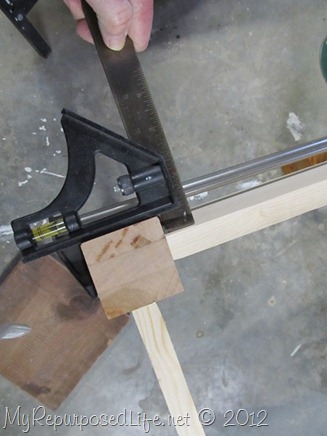 My combination square is so handy to make sure everything is equidistant. The front matches . . .
My combination square is so handy to make sure everything is equidistant. The front matches . . .
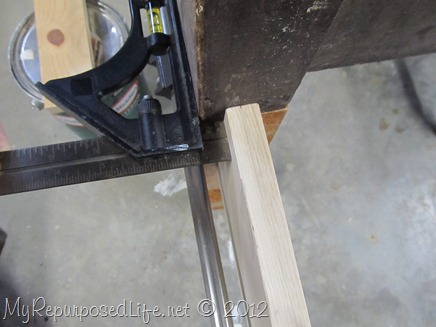
. . . the back.
 A level is used to check to make sure the side board is plumb.
A level is used to check to make sure the side board is plumb.
Bits and pieces make up a puzzle jenny lind bed bench
 I insert all the pocket hole screws. Then I clumsily step on my ancient (small) level and break it! Yep, on my next trip to the Home Depot I had to pick up a new one. I bought one that is steel and magnetic. Although I have two large unbreakable levels, this was my only small one.
I insert all the pocket hole screws. Then I clumsily step on my ancient (small) level and break it! Yep, on my next trip to the Home Depot I had to pick up a new one. I bought one that is steel and magnetic. Although I have two large unbreakable levels, this was my only small one.
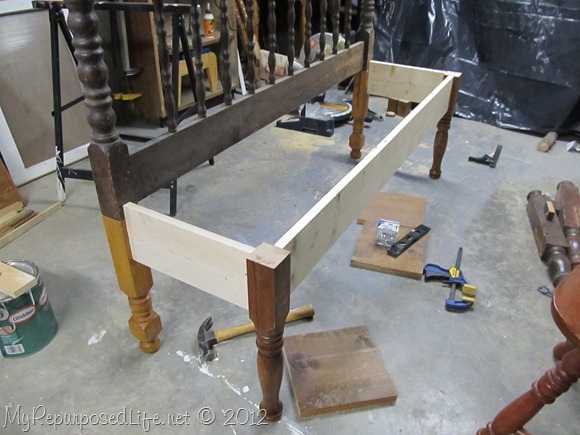 Here you can see all the different bed parts! But, it’s starting to really come together. I love the look that I get with the front and side by using the Kreg Jig pocket holes. So much better than the old days when I would have to set the legs on the inside of a “box” that became the seat.
Here you can see all the different bed parts! But, it’s starting to really come together. I love the look that I get with the front and side by using the Kreg Jig pocket holes. So much better than the old days when I would have to set the legs on the inside of a “box” that became the seat.
Are you still with me? Or have you just skimmed this post to look at the pictures? ![]()
Add center braces to strengthen the frame
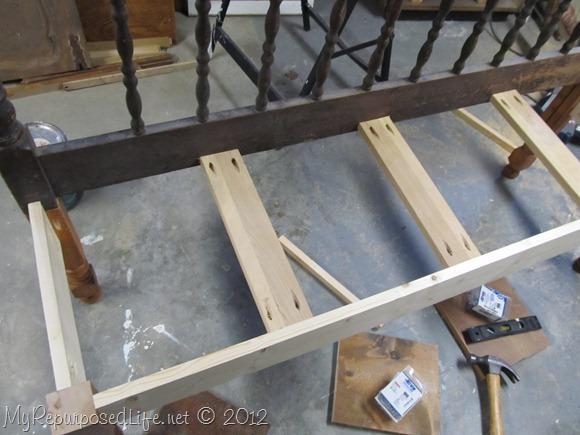 Because I plan to run the seat lengthwise, I need to add some supports for the 1×6’s. Luckily I save everything so I rummaged in the garage and found a scrap piece of something I curbed. I used the Kreg Jig again to do the pocket holes. I get absolutely nothing to spread the word about this jig. If you have an extra $40-50 I highly recommend you buy one for yourself. You really get a tight connections with the pocket holes/screws. Having the Kreg Jig totally changes how I make my headboard benches.
Because I plan to run the seat lengthwise, I need to add some supports for the 1×6’s. Luckily I save everything so I rummaged in the garage and found a scrap piece of something I curbed. I used the Kreg Jig again to do the pocket holes. I get absolutely nothing to spread the word about this jig. If you have an extra $40-50 I highly recommend you buy one for yourself. You really get a tight connections with the pocket holes/screws. Having the Kreg Jig totally changes how I make my headboard benches.
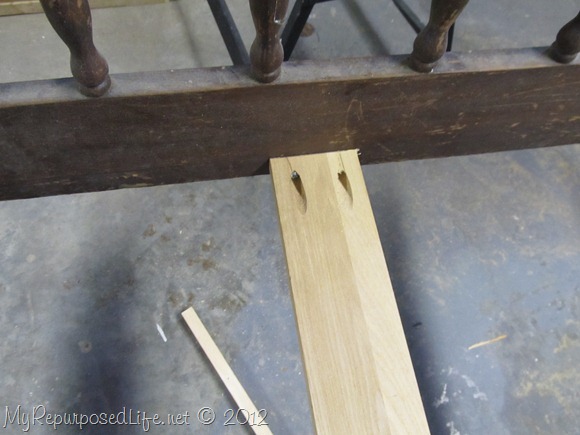
Assemble the headboard bench seat
 I notched out the board with the Dremel Multi-Max with the 3” Wood and Drywall Saw Blade
I notched out the board with the Dremel Multi-Max with the 3” Wood and Drywall Saw Blade
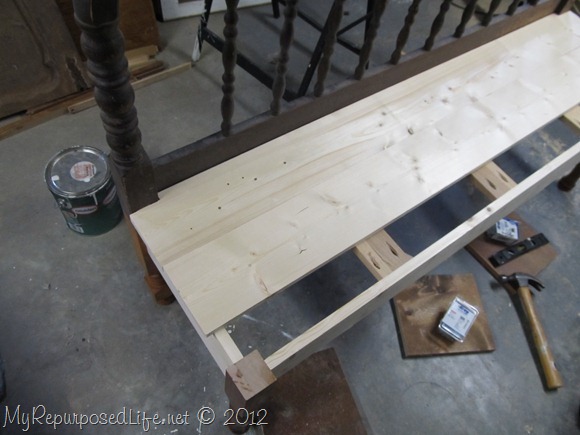
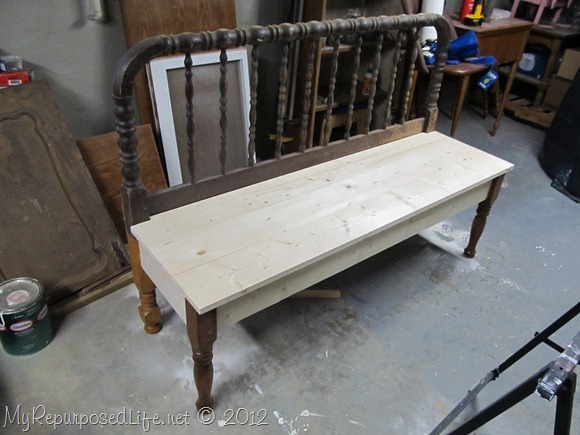 As usual, a brad nail gun was used to attach the seat.
As usual, a brad nail gun was used to attach the seat.
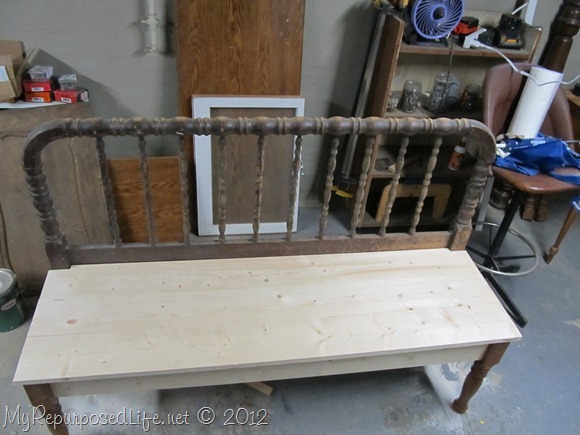 This bench came together in just a couple of hours. I was amazed how easy it was.
This bench came together in just a couple of hours. I was amazed how easy it was.
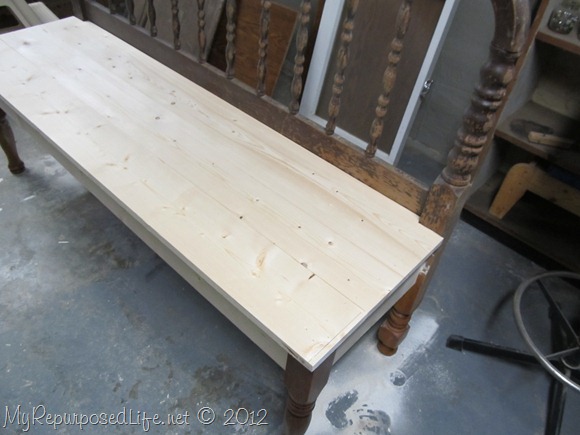 I’ve been dreading it and putting it off because I knew I had to raise the foot board.
I’ve been dreading it and putting it off because I knew I had to raise the foot board.
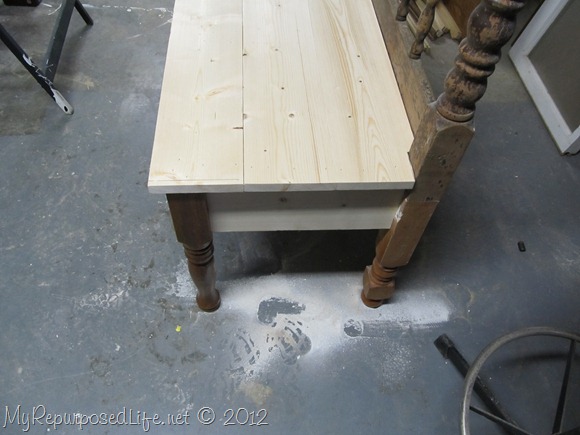 It’s amazing how sturdy it is after using the pocket holes in the front AND the back of the back leg.
It’s amazing how sturdy it is after using the pocket holes in the front AND the back of the back leg.
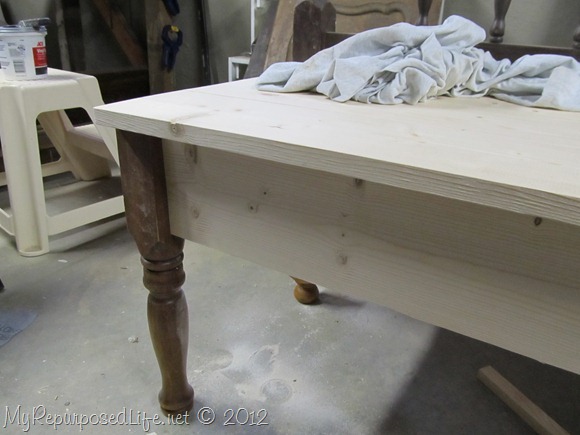 I seriously love how nice that front board looks using the pocket holes to attach it to the front legs.
I seriously love how nice that front board looks using the pocket holes to attach it to the front legs.
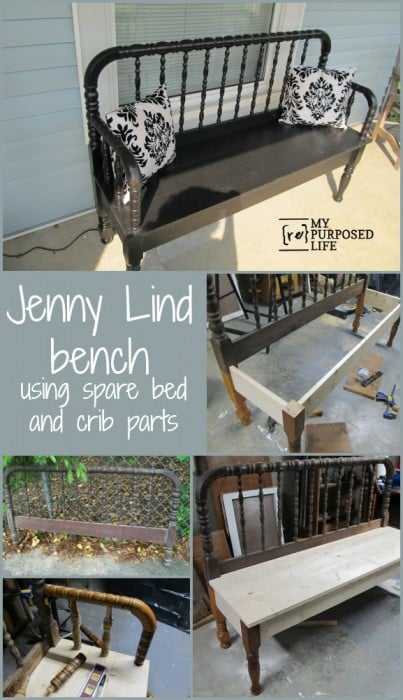
Check out Jenny Lind Bench pt 2 for details on how I added more charm to this bench. There is an update on this bench.
Maybe you’ll want to check out my favorite headboard bench with storage tutorial here.
gail



I Have A Learning Disability And This Is The Best Tutorial For My ADD I Have Ever Seen! TVM